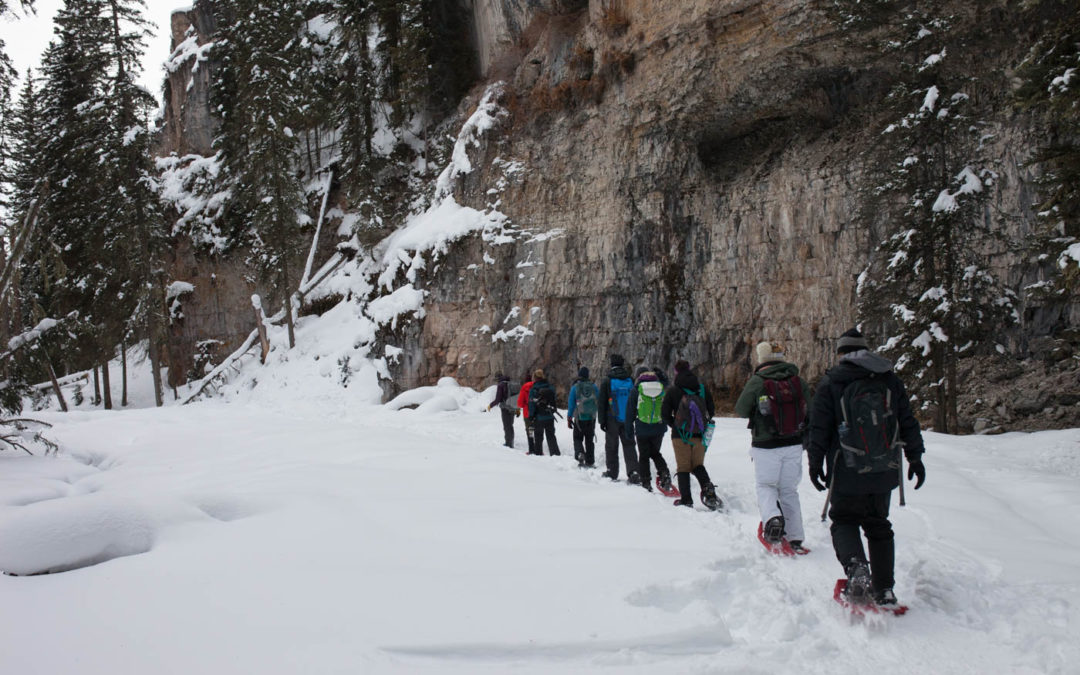It was our first morning at the Lamar Buffalo Ranch, and the students and teaching team were teeming with excitement. We started the day off with a gourmet breakfast, and settled in for lectures that would orient the students to the Yellowstone Ecosystem.
The 18 students all come from fairly diverse backgrounds at the University of Colorado, with majors in Ecology & Evolutionary Biology, Environmental Studies, Anthropology, Sociology, and more. We were thrilled to have all of these unique perspectives together in one space for this two-week course. Dr. Lambert designed the course so each student could learn from both the materials, and one another.
Dr. Lambert began with an introduction to Yellowstone National Park’s history, as well as a look into it’s thriving animal communities. Of course no animal sightings can be guaranteed, but she expected we would be seeing wolves, coyotes, fox, pronghorn, elk, bison, and more.
After the students received this thorough introduction to the park, Joshua Theurer walked us through his involvement with the park. Joshua is the Lead Instructor at Yellowstone Forever (YF), and a member of this course’s teaching team. His past work focused on ecological field research, especially avian ecology, throughout the western U.S. At YF, he teaches programs centered around natural history, develops college programs, and coordinates citizen science projects.
After spending some time orienting the students to Yellowstone National Park’s unique geology, Joshua walked the class through his recommended practices for keeping notes while out in the field observing the geology of the park, natural landscapes, and wildlife. The students are required to keep two field notebooks throughout our two week course, one being a natural history notebook.
The second field notebook is for ethnographic notes, and Drew Zackary spent some time explaining how best to organize these observations. Drew is a Cultural Anthropology PhD student and teaching assistant for this course, who researches the effect conservation areas have on people living within them. Currently his field site is the Kachenjunga Conservation Area in northeast Nepal. Questions about decentralization, land tenure, ethnic identity and perceptions development are of importance in his current fieldwork.
Because we are in an anthropogenic landscape and we would be encountering many individuals with diverse background and experiences, Dr. Lambert felt it was crucial for students to take note of the stories people share. For the students unfamiliar with ethnography, Drew provided his own explanation: ethnography is when we use “one’s own profound ignorance to gain critical insight into human world making, thus rendering radical difference knowable.”
It was a long drive to the Lamar Buffalo Ranch (~12 hours from Boulder), and after a morning full of lectures, we were all anxious to get outside. We took our first field excursion out to the Pebble Creek Trailhead and snowshoed along the trail. This was an excellent opportunity for everyone to practice taking notes, using the binoculars and scopes, and snowshoeing.
It was a beautiful afternoon; the sky was overcast and peaceful, and the insulating snow left us with a sense of calm and amplified the sound of the nearby Pebble Creek. The group was in awe of the high rock walls surrounding us in the canyon, and made frequent stops to listen and learn about the area.
Once we got back to the shuttles, graciously provided by Yellowstne Forever, we walked across the road to observe a number of moose in the valley. Typically, moose are not commonly seen in this portion of the park, so this was quite a treat. To make it even better, we saw not one, but TWELVE different moose, all in the same area! Everyone watched in utter amazement as three bull moose sparred with one another, playfully practicing their defensive motions. The sound of their horns scraping against one another was close enough to hear, making the experience even more memorable.
Once back at the ranch, we were greeted by the first of our guest speakers: Nathan Varley and Linda Thurston. Nathan and Linda have extensive background with the wolves of Yellowstone, and we were fortunate to learn about their work before heading into the field with them the next morning.
Tomorrow: wolf watching!








